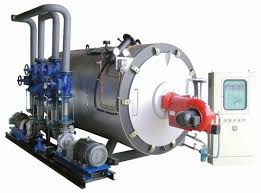
ພ.ຈ. . 06, 2024 21:54 Back to list
steam boiler thermostat
Understanding Steam Boiler Thermostats A Guide to Efficient Heating
Steam boilers have long been a cornerstone of heating systems, particularly in commercial and industrial applications. At the heart of these systems lies an important component the thermostat. The steam boiler thermostat plays a crucial role in regulating the temperature and ensuring the efficient operation of the heating system.
A steam boiler thermostat is a temperature-sensitive switch that controls the boiler's heating cycle. It monitors the temperature of the steam or water in the boiler and sends signals to the burner or heat source to maintain the desired temperature. By doing so, it helps ensure that the system operates within safe and efficient temperature ranges, thus maximizing performance while minimizing energy consumption.
One of the key benefits of a steam boiler thermostat is its ability to maintain consistent temperatures. When the boiler reaches the preset temperature, the thermostat signals the burner to shut off. Conversely, if the temperature drops below the set point, the thermostat activates the burner to bring the temperature back up. This continuous cycle creates a stable environment, critical for processes that rely on specific temperature ranges, such as in manufacturing or laboratory settings.
steam boiler thermostat

Moreover, modern steam boiler thermostats often come equipped with advanced features that enhance usability and efficiency. Programmable thermostats allow users to set different temperatures for various times of the day or week, accommodating fluctuations in demand and saving energy during off-peak times. Some thermostats also have smart technology that enables remote monitoring and control via smartphones or computers, providing users with greater flexibility and insights into their heating system’s performance.
Regular maintenance of the steam boiler thermostat is vital for optimal operation. Dust accumulation, mechanical wear, and age can affect the accuracy of the thermostat. Periodic inspections and calibrations are recommended to ensure the thermostat is functioning correctly and responding appropriately to temperature changes. This not only prolongs the life of the thermostat but also enhances the overall efficiency of the boiler system.
In addition to routine maintenance, understanding the different types of steam boiler thermostats can empower operators to choose the best option for their specific needs. Mechanical thermostats, for instance, rely on bimetallic strips, while electronic thermostats use sensors to detect temperatures more accurately. Each type has its advantages and applications, depending on the complexity and demands of the heating system.
In conclusion, the steam boiler thermostat is a vital component in managing heating systems efficiently. By maintaining consistent temperatures, promoting energy savings, and offering advanced features, these thermostats not only enhance comfort but also contribute to the longevity of the boiler itself. Proper maintenance and an informed selection of thermostat types can lead to improved performance and increased efficiency, making steam boiler systems both effective and economical. Whether in industrial settings or large-scale commercial buildings, investing in the right thermostat and ensuring its proper functioning can yield significant benefits in the long run.
-
Efficient Biomass Fired Hot Water Boiler | AI Heating Solution
NewsAug.01,2025
-
High-Efficiency Gas Thermal Oil Boilers | HPT Models
NewsJul.31,2025
-
Oil Fired Hot Water Boilers Sale - High Efficiency & Affordable
NewsJul.31,2025
-
High-Efficiency Commercial Oil Fired Steam Boiler for Industry
NewsJul.30,2025
-
High-Efficiency Biomass Fired Thermal Oil Boiler Solutions
NewsJul.30,2025
-
High Efficiency Gas Fired Thermal Oil Boiler for Industrial Heating
NewsJul.29,2025
Related PRODUCTS






















